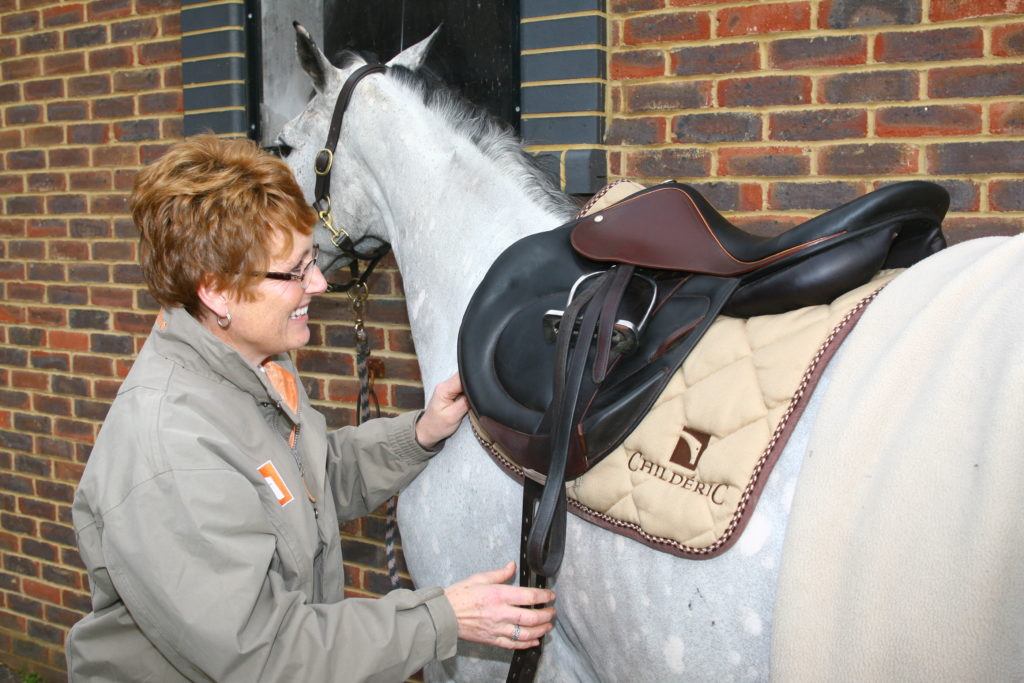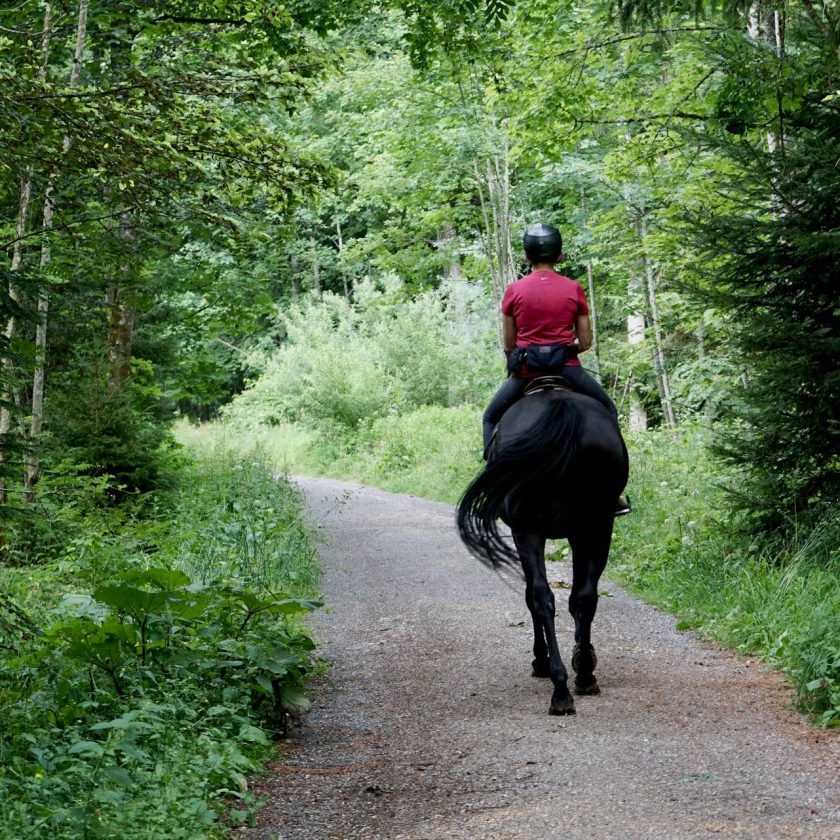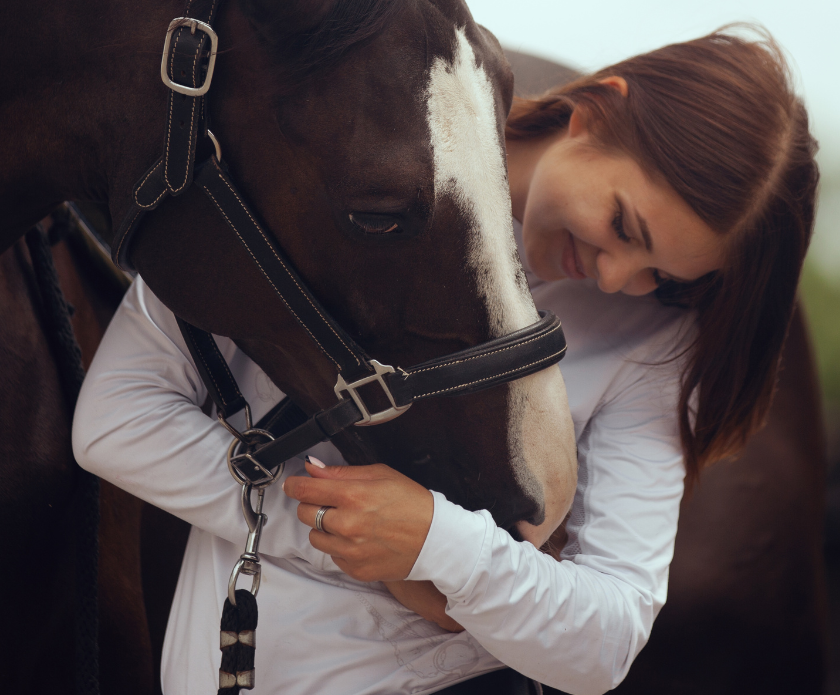In this article, we speak to Tricia Bracegirdle to find out more about pressure points in saddle fitting. Tricia, Senior Saddle Technician for bespoke saddlery brand Childéric Saddles, looks at what pressure points mean, how they are caused and how the rider can attribute to the problem.

We can now show where the pressure points of a saddle are with pliance testing, but this technology isn’t available to every rider/horse combination, nor can it take away the major effect that the rider’s balance and horse’s symmetry can have on the pressure distribution. With no rider and the horse standing still the pressure may well be equal, but as soon as they move things change!
The main places we look for pressure points are:
- behind the shoulder
- in the middle of the back
- and at the back of the saddle
Looking at the fit of the saddle before commencing work, during exercise and after work is needed to really assess the problem.
Common problems we see behind the shoulders are:
- The saddle is too wide or too narrow
- The saddle has moved forward which makes it tight on the shoulder
- The saddle has moved back and dropped down
- The rider is being pushed too far to the front of the saddle so the pressure is at the front – saddle doesn’t fit the rider – usually too small
Common problems we see in the middle:
- The saddle when placed on the horses back rocks/is the wrong shape for the horses back – usually a flat back, banana saddle
- Stirrup bars too tight
- Girth done too tight
Common problems we see at the back of the saddle:
- The saddle balance is incorrect – tipped backwards – this comes from being too narrow at the front or not enough panel in the rear
- The panels are too big at the back
- The saddle is too long
- The saddle is too small for the rider so they are sitting at the back of the saddle
- The saddle has gone forward, going up at the front
Sometimes the pressure points aren’t equal either. For example, we might see it behind one shoulder or one side at the back or one of each diagonally
- Pressure like this means that the symmetry of either the horse, rider or saddle is wrong
- Flocked panels can be reshaped by uneven pressure either from the horse or the rider (Which is why flocked saddles should be checked regularly)
- Foam panels don’t change shape like flocked versions and should be made symmetrical from the workshop. In rare instances a manufacturer may make the panels asymmetric to compensate for the horses shape, but this means the horse cannot change shape through training and that the saddle cannot be used on any other horse. The use of pads/shimmies can usually be the way to solve this problem but should be decided upon with your saddle fitter’s advice.
You should always call your saddle fitter if you are worried about pressure points. At the initial consultation, you should explain what concerns you have and detail as much information as possible. Explain; How did you become aware of pressure points? Was it your back person who noticed tightness or soreness? Then you should show the report they might have left, or even better, ask them if they are present there too.
Assessment
By looking at the saddle girthed and un-girthed, bare on the back (without saddle pads) and discussing the issue sometimes it becomes obvious what problem the horse/rider/saddle has. Having your saddle fitter help you solve the problem will hopefully ensure that the issue does not continue. Each brand has their own different ways of altering the fit so to make a solution you have to be open to their suggestions.
If it’s not obvious from the ground when the horse is standing still, then your saddle fitter should ask you to tack your horse up to be able to assess you both. You should then ride the horse so that you, and everyone present, can discuss what is going on. One of the things we notice a lot is that the horse is not being ridden straightly i.e. on four tracks on a straight line and circle or when doing lateral work, this will cause a shift in the saddle which can create pressure points. This is why it’s useful to have your trainer and back person present, so they can see and help with the solution.
Other Items of Tack
Another important area to consider is how and what you choose for a girth, and also how you use a breastplate. Both these pieces of tack can put pressure in the wrong place when used incorrectly. As soon as they are changed/fitted correctly we can often see the problem disappear. Corrections instantly eliminate the pressure on the horse and although the horse may not forget instantly, he will do over time. So, make sure that your saddler is also aware of what accessories you are using with your saddle. Don’t forget to include fluffy saddle pads as well – they can all have an impact on the fit of your saddle!
With thanks to Tricia Bracegirdle. To learn more on Childeric Saddles, please visit Childeric Saddles.





